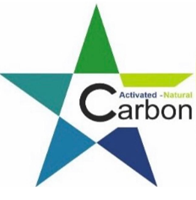Introduction to Steam Activated
Coconut
Shell Activated Carbon
The Essence of Activated Carbon
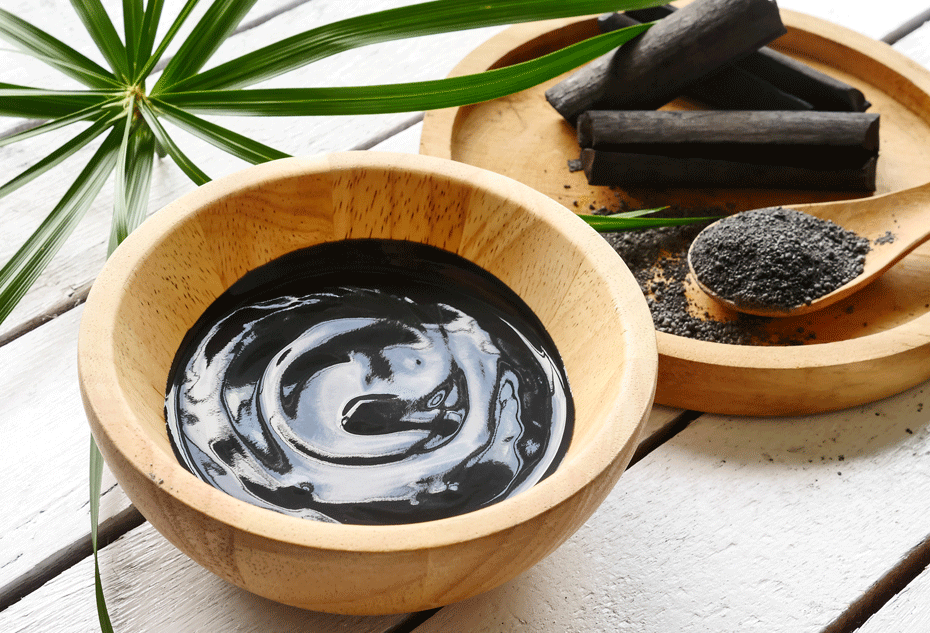
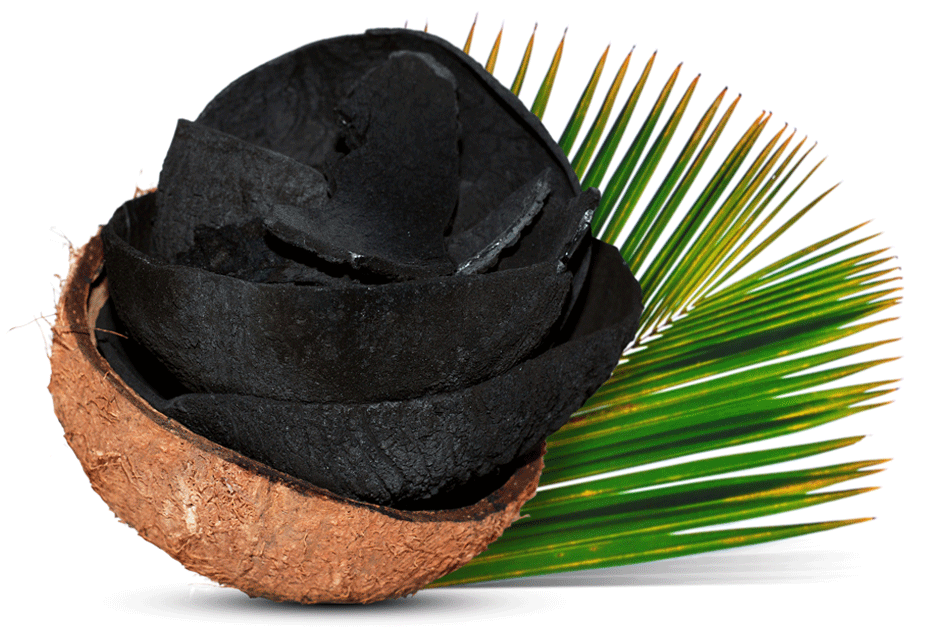
Role of Coconut Shell
The Steam Activation Process
Steam activation process is a crucial step in the production of Activated Carbon. It involves heating the charcoal raw material in the presence of steam at high temperatures. This process first achieves carbonisation by driving out non-carbon / volatiles like oxygen , hydrogen and hydrocarbons thereby developing internal pores. Subsequently, the material undergoes steam activation, that enhances the quantity and size of these pores, resulting in a substantial internal surface area. Due to its well-developed pore structure and extensive internal surface area, Activated Carbon has remarkable adsorption capabilities. It is available in granular, pelletized, and powder forms.
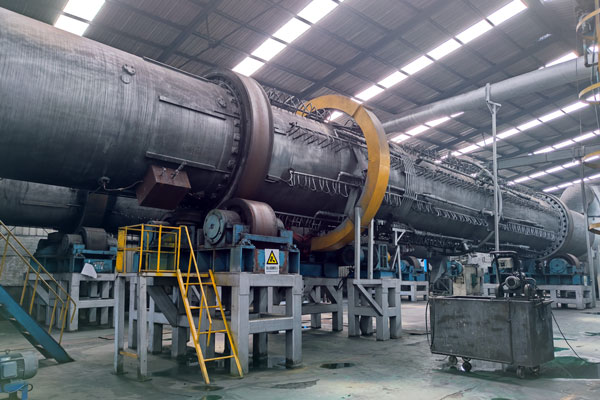
Activated Carbon features three types of pore volume categories:
- Micro Pores (<2 nm wide) for adsorbing molecules
- Meso Pores (2-50 nm) wide for transporting
- Macro Pores >50 nm wide as entry points for contaminated molecules.
Contaminants enter through the macro pores, get transported by the meso pores, and get adsorbed by the micro pores. Different molecules adhere to the Activated Carbon surface in different ways. Smaller molecules can diffuse more into the structure and cover a larger surface area than larger molecules due to the varying sizes of the pores.
Development of Pore in Stream Process
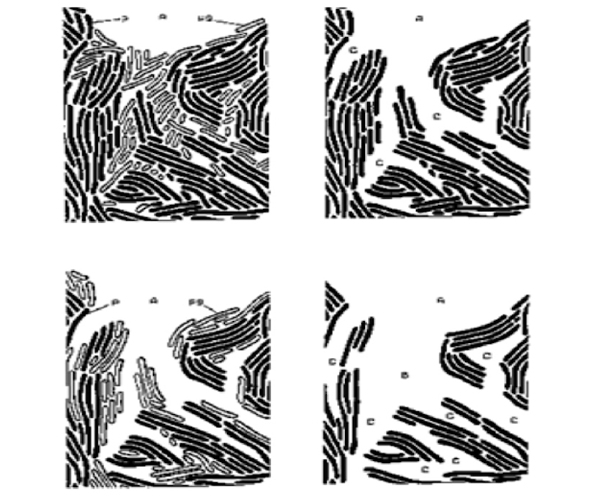
.
Pore Classification
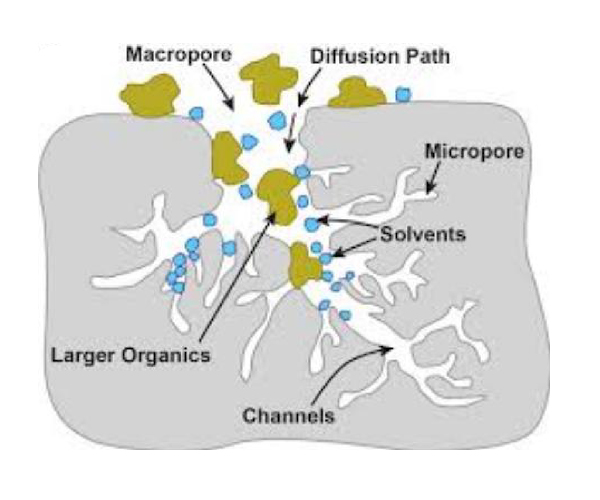
Pore Classification
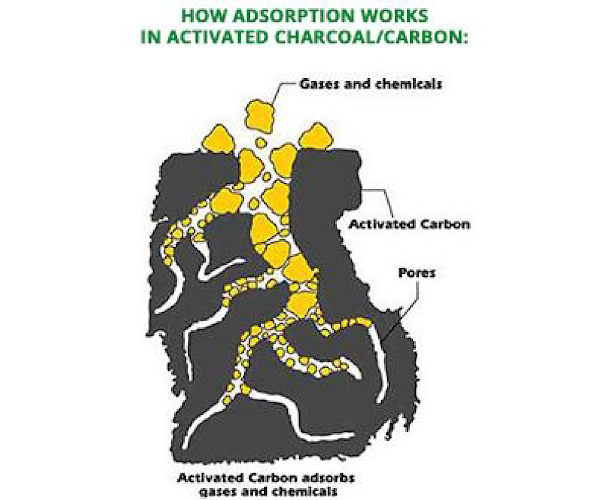
.
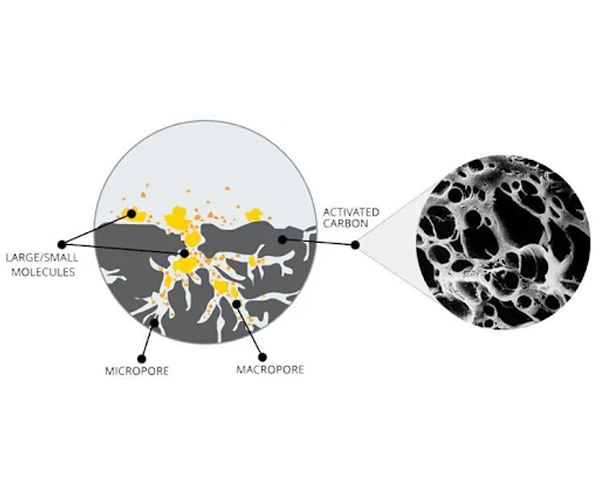
The Advantages of Steam Activated Coconut
Shell Activated Carbon
High Adsorption Capacity
Due to its extensive pore structure, steam activated coconut shell activated carbon exhibits an exceptional ability to adsorb a wide range of contaminants, including organic compounds, heavy metals, and gases
Durability
Steam activated coconut shell activated carbon is known for its durability and can be regenerated multiple times, making it a cost-effective choice for long-term use.
Versatility
This type of activated carbon is highly versatile and can be used in various applications, such as water treatment, air purification, food processing, and industrial processes.
Environmental Friendliness
Coconut shells are a renewable resource, and the production process of activated carbon typically involves minimal environmental impact.
production Process
production Process
The company principally operates through three primary segments — Construction Industries, Resource Industries and Energy & Transportation — and provides financing and related services through its Financial Products segment. The company principally operates through three primary segments — Construction Industries, Resource Industries and Energy & Transportation — and provides financing and related services through its Financial Products segment.
The company principally operates through three primary segments — Construction Industries, Resource Industries and Energy & Transportation — and provides financing and related services through its Financial Products segment. The company principally operates through three primary segments — Construction Industries, Resource Industries and Energy & Transportation — and provides financing and related services through its Financial Products segment.

The Grades we offer are:
A. Water and Waste Water Purification
Our WT grades are specifically designed to offer maximum performance in Water and Waste Water Purification. Manufactured from select grades of Coconut Shell charcoal, our WT carbons they are of high strength, attrition resistance and best adsorption.
Adsorption
CSAC, like other activated carbons, excels at adsorption. Its porous structure with a large surface area allows it to trap contaminants like organic compounds, chlorine, and some heavy metals.
Low Cost
Compared to some other treatment methods, CSAC can be a relatively inexpensive solution, especially when considering its reusability (depending on the contaminant).
Natural Precursor
Coconut shells are a renewable resource, making CSAC an attractive option from a sustainability standpoint.
Applications:
Color Removal
CSAC can be effective in removing color-causing compounds from water, improving its aesthetic quality.
Organic Contaminant Removal
It can adsorb various organic pollutants like pesticides, herbicides, and some industrial chemicals.
Pre-treatment
CSAC can be used as a pre-treatment step before other purification methods, reducing the load on processes like chlorination or reverse osmosis.
WT carbons bearing NSF certification are just the right product for this application
We offer these standard mesh sizes:
US Mesh 8×16, 8×30, 12×30, 12×40 and 30×60.
CTC Activity of 50%, 55% and 60%.
We can also undertake to supply carbons to suit customer specific needs.
Click here to access our brochure
B. Air and Vapour Phase Purification
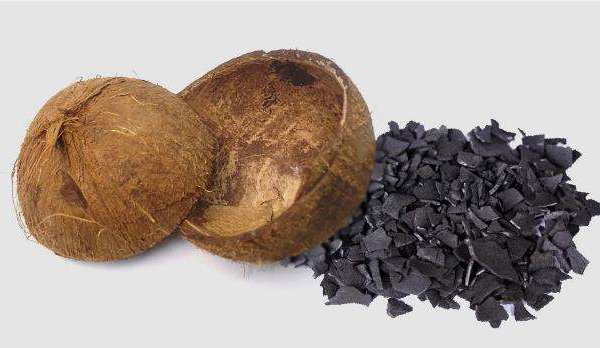
Activated carbon in different forms (mainly granular, pelletized, cloth, etc.) is used to reduce pollutant gases to very low concentrations. In most cases the activated carbons must be highly microporous to maximize the adsorption of the gases and vapors on the micropores.
There are many gas purification processes using activated carbon, among which the most important are hydrogen sulfide removal from natural gas, filtering breathing air in air-conditioning systems (including the removal of odors, radon, etc., in recirculated air), retention of sulfur dioxide or nitrogen oxides from flue gases, gasoline vapor recovery in gasoline loading facilities, etc.,
Our VP Grades of Activated carbon have their pore structure designed to provide best adsorption of impurities with minimum resistance to flow in a wide range of filters.
We offer these standard sizes:
US Mesh 4×8, 4×10, 12×20.
CTC Activity of 50%, 55% and 60%.
We can also undertake to supply carbons to suit customer specific needs.
Click here to access our brochure
C. Gold Recovery
Gold is a highly priced metal and therefore its most efficient extraction from ore is critical.
Activated carbon is used in gold mining to extract gold from ore using cyanide leaching agents. The carbon adsorbs the gold cyanide complex, leaving behind contaminants, which is further proceeded to recover gold.
Coconut shell Activated Carbon is a preferred material for use in Gold Extraction due to several key properties:
High Adsorption Capacity
It has a very large surface area with numerous tiny pores that effectively trap gold particles from solution.
Excellent Strength
Compared to other activated carbons, coconut shell-based ones are extremely hard and resistant to wear and tear. This is crucial in the gold mining process where the carbon comes into contact with abrasive materials.
Fast Adsorption Kinetics
It can quickly capture gold particles from the surrounding liquid, making the extraction process efficient.
Regeneration Capability
The used activated carbon can be treated to desorb the gold, allowing for re-use in the extraction process. This reduces waste and makes the operation more economical.
Overall, coconut shell activated carbon plays a vital role in the efficient and economical extraction of gold by providing a highly effective and reusable method for capturing gold particles from solution.
Our standard GR Grades are:
US Mesh 6×12, 6×16 and 8×16.
CTC Activity of 50%, 55% and 60%.
We can also undertake to supply carbons to suit customer specific needs.
Click here to access our brochure
